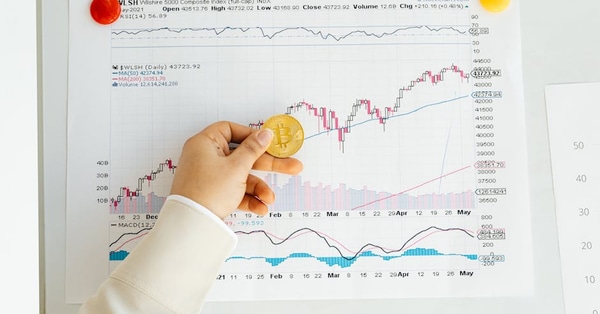Decoding Consumer Trends: 5 Data Techniques for 2024
Wondering how to keep up with changing consumer behavior in 2024? Discover five data-driven techniques to help you stay ahead of the curve!
As we step into 2024, the landscape of consumer behavior is evolving faster than ever. With technology advancing at breakneck speed, understanding the nuances of what drives consumer decisions is crucial for brands looking to stay ahead. In this article, I’ll share five powerful, data-driven techniques that can help you navigate the complex world of consumer behavior analysis and capitalize on emerging market insights.
Let’s face it: the dynamics of consumer behavior are shifting like sand under our feet. Gone are the days when a few catchy ads could secure brand loyalty for a lifetime. Today, consumers have more choices and information than ever before, and their expectations are sky-high. That’s why diving deep into consumer behavior analysis is no longer just a nice-to-have—it’s essential for survival.
Data-driven marketing trends are reshaping how we strategize. I remember when I first stumbled into the world of market analysis; it was like a light bulb went off. Understanding why people buy what they do—and how to motivate them to choose your brand—quickly became a passion of mine. With each new insight, I found myself more enamored by the art and science of decoding consumer behavior. So let’s unpack what’s on the horizon for 2024!
Predictive analytics—sounds fancy, right? But it’s essentially a crystal ball for today’s marketers. By using historical data and machine learning, brands can anticipate customer needs and trends. This isn't just reserved for giants like Amazon or Netflix; smaller brands can tap into it too with the right tools.

For instance, consider a well-known retail brand that used predictive analytics to forecast when their customers would most likely run out of certain products based on their purchase behavior. They then sent timely reminders, resulting in a 30% increase in sales during that period. Imagine being able to offer just what your customer needs exactly when they need it! So, how do you implement predictive analytics? Start by identifying key data points, using analytics tools like Tableau or Google Analytics, and continuously refining your approach based on what the data tells you.
In a world where people share their thoughts at lightning speed, social listening has become a goldmine for marketers. It’s all about tuning into the online chatter around your product or industry, allowing you to understand consumer sentiment in real-time. Think of it as eavesdropping—only, it’s perfectly legal and highly insightful!
Platforms like Hootsuite and Brandwatch make it easier than ever to track conversations. I remember digging through social media comments for a product launch, and what I found was eye-opening. While we were excited about the features, consumers were more interested in eco-friendliness. That simple insight shaped our messaging and increased engagement significantly. So, if you haven’t already, start listening—your consumers are telling you exactly what they want!

A/B testing is like that trusty old toolbox—it’s always handy for refining your marketing strategy. If you’re not familiar, it involves creating two versions of something (like an email or ad) and testing them to see which performs better. This can be a game-changer for understanding consumer behavior.
Let me break it down for you. Say you’re deciding between two subject lines for your next email campaign. By sending each variation to a small percentage of your audience, you can measure which one leads to higher open rates. I recall a campaign where A/B testing revealed that a more conversational tone performed better than a formal one. The result? Double the engagement! Set up your tests, tailor your messages based on real-time data, and watch your conversion rates soar.
Behavioral segmentation is like having your cake and eating it too. By grouping consumers based on their behaviors—like purchase history, usage rate, or brand loyalty—you can create hyper-targeted campaigns that speak directly to individuals. It’s a way to get personal, and who doesn’t appreciate that?
Let’s take a look at a personal experience. During a past campaign, we noticed a segment of our audience frequently purchased fitness-related products but seldom engaged with our lifestyle content. By tailoring targeted emails that focused specifically on their interests and habits, we saw a 40% uptick in interaction from that segment. It’s all about understanding what makes your audience tick and meeting them where they are.

Ah, AI—the shiny new tool in every marketer’s toolbox. It’s revolutionizing consumer behavior analysis by providing real-time insights that were once only a dream. But here’s the catch: while AI offers incredible advantages, ethical considerations are paramount. How can we ensure we’re using it responsibly?
AI can crunch vast amounts of data to uncover patterns and predict trends, but we must remain aware of privacy concerns. I believe there’s a delicate balance between utilizing technology and keeping human intuition at the forefront. After all, behind every data point is a real person with emotions and experiences. As we harness the power of AI, let’s commit to doing it ethically—because consumers today value transparency and authenticity more than ever.
So, where does that leave us? We’ve walked through several key techniques that can redefine how you understand and connect with consumers. From predictive analytics to behavioral segmentation, the tools at our disposal are more powerful than ever.

But here’s my takeaway: the world of consumer insights is continuously evolving. As marketers, we need to adopt a mindset of continuous learning and adaptation. It’s exciting to think about the discoveries that await us! Who knows what the next breakthrough will be?
In a world where consumer behavior is in a constant state of flux, harnessing data-driven techniques is not just an option; it’s a necessity. By embracing these innovative strategies, brands can uncover deeper insights and craft personalized experiences that resonate with their audiences. As we move further into 2024, staying attuned to these behavioral trends will be key to thriving in the competitive marketplace. Remember, the journey of understanding consumer behavior is ongoing, and each insight gained is a stepping stone towards greater success.
Let’s get ready to decode the future together!
Tags:
Related Posts
UK Trials to Evaluate Effects of Puberty Blockers in Youth
Two UK clinical trials aim to assess the effects of puberty blockers on young people with gender incongruence, following critical reviews of existing practices.
Take Control of Your Finances with a Personal Budget
Tired of living paycheck to paycheck? Discover simple budgeting strategies to take charge of your finances and pave your way to financial freedom.
Discover the Future of Fashion: Sustainable Trends for 2024
Curious about how fashion is going green? Explore the top trends in sustainable fashion for 2024 and learn how to make eco-friendly choices this year!
Unlocking 2024: 5 Digital Marketing Trends to Watch
Curious about what’s next in digital marketing? Discover the top trends for 2024 that can elevate your strategy and keep you ahead of the curve.
Mastering Remote Team Communication: 10 Essential Tips
Struggling with remote team communication? Discover 10 actionable tips to elevate your virtual collaboration and strengthen connections within your team.
10 Tips to Master Remote Team Communication Tools
Struggling with remote team communication? Discover 10 practical tips to enhance your virtual collaboration and boost team success!